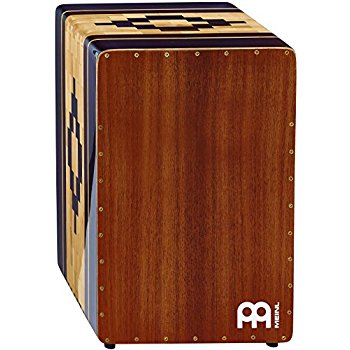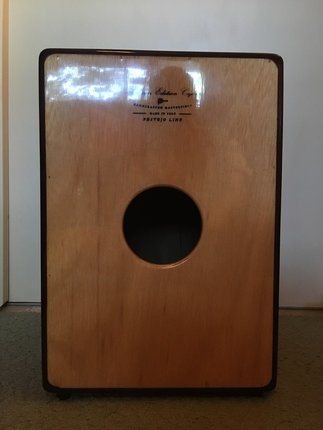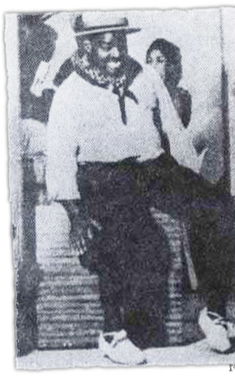|
The cajon (kah-hone) is an all-wooden hand drum that originated in Peru around the 18th century. The name comes from the Spanish word for box, and the instrument is quote literally a box. The player sits atop the cajon and hits the wood in various places and various ways to create different sounds. Early versions of the instrument used packing crates, but modern iterations are intricately designed to produce different types of sounds for different functions.
My cajon is a Meinl Artisan Edition made in Peru, with four metal chords inside to produce an small effect similar to that created by wires on a snare drum. Other cajons can have immense snare sound, and other may have no snares at all. Most modern cajons have a "sound port" on the back to help produce a bass tone. Originally used in afro-peruvian styles of music, cajons have diversified their portfolio and are featured in flamenco, rock, pop, jazz, folk, afro-cuban, and many other styles of music. Most of my cajon playing is done in praise-band performances during church services, where the instrument is popular for its ability to act as a quieter, but similar-sounding substitute, for the drumset. |


